2D Performance
In order to better understand some of the later results, we are putting forward a good old acquaintance. With our GDI/GDI+ benchmark, we are first testing two different output methods for 2D objects, as found in older applications and print outputs, and how it is still used today in the same or modified form for the display of the GUI. However, it is very easy to use the throughput when writing directly to the device or the storage performance during handling in a huge DIB.
Synthetic benchmarks (Tom 2D)
First, let's consider writing directly to a device. Here, the graphics driver uses the CPU very extensively, but mostly only with a few threads. After all, since the introduction of the Unified Shader architecture, there is no real 2D hardware acceleration and the Windows driver model is also a real brake in this regard.
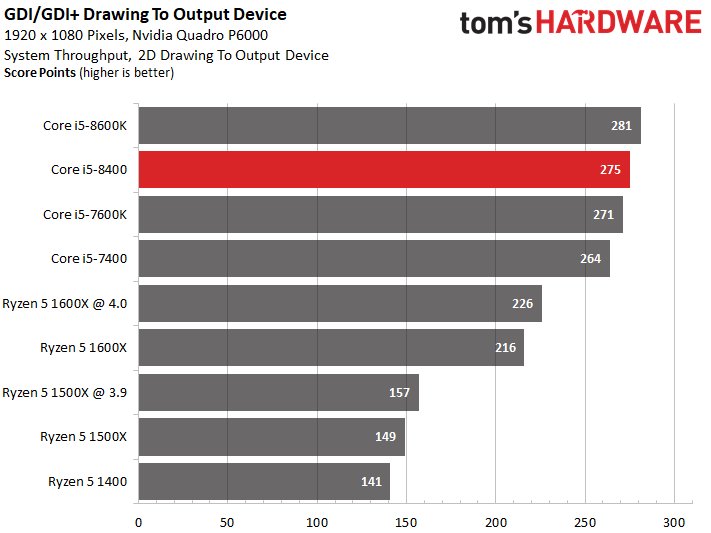
Now we bring the memory into play and use the only remaining 2D function in hardware: the direct plotting of the functions into the memory and then copying the graphics created in memory to the output device. We complete exactly the same sequences, but draw first into a virtual bitmap and not on the monitor. First we blew the complete graphics to the output device. Even if the current CPU utilization is slightly higher because the bottle neck of the rest of the system is gone, the result is interesting: Clock wins, but AMD can keep up
AutoCAD 2016 (2D)
We are now comparing our own benchmark with AutoCAD, although directX is used here. But this program does nothing else when drawing than to recreate every single drawing function in software first. However, since the IPC is more important because AutoCAD scales poorly over the core count, the result was predictable.
3D performance
Many of the professional applications in the development area have been optimized and compiled specifically for Intel CPUs, which you will of course also notice in the overall performance. In spite of everything, we cannot and do not want to exclude them in terms of the overall picture, but at the same time it should be an incentive for the developers to focus more on AMD and Ryzen, as well as to openly openly open lyses themselves and the users to both options. Keep. this also applies to better multi-core optimization, as far as this is reasonable and possible.
AutoCAD 2016 (3D)
Clock precedes core number, with the older and latest Intel generation almost equal depending on the clock. Since AutoCAD relies on DirectX, but is hardly more core-optimized, it is also very close to the game results of many older titles. But here, too, the fact that the performance scales enormously with the clock, because the graphics card finally gets to do it properly.
Cinebench R15 OpenGL
With The OpenGL benchmark from Cinebench, we see that clock is (almost) everything again. The Core i5-8400 is located on the same stair heel with the older four-core Core i5-7600K. The overclocked Ryzen 5 1500X was a tick slower than the overclocked Ryzen 5 1600X.
Solidworks 2015
This also applies to Solidworks 2015, whereby the two generations are again almost equal at the same time. Since Solidworks can often only use up to four cores except for a few special areas (see later also for the CPU composite), this is hardly surprising.
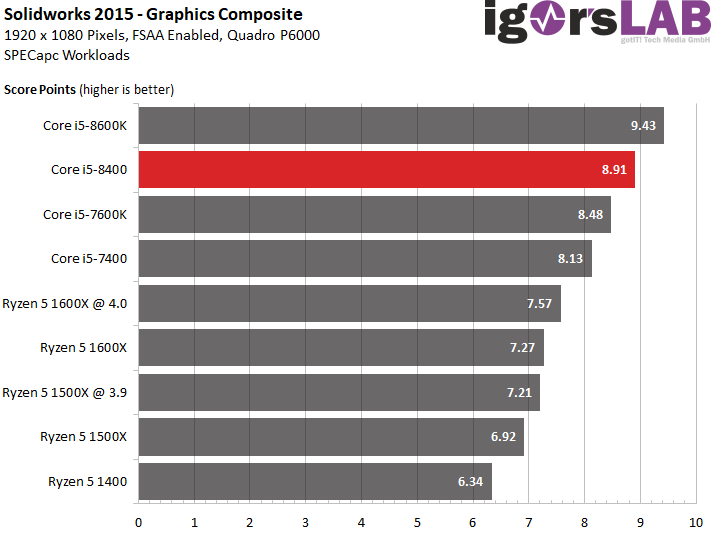
Creo 3.0
Creo provides a similar image, because with the pure real-time 3D graphics output in design mode, many cores are of little use at first.
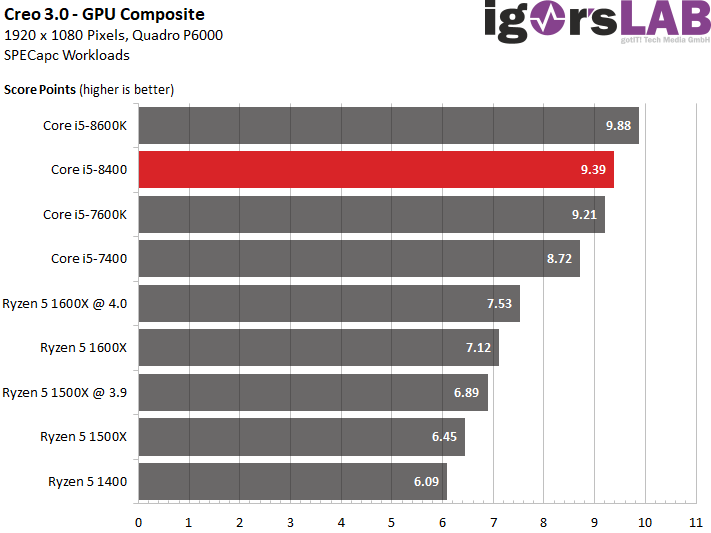
Blender and 3ds Max (real-time 3D preview)
Also with Blender and in 3ds you get the same result in the preview and the trend solidifies into a realization, the beat is everything again. Only the final rendering should be able to turn (perhaps). We are excited.
With 3ds Max, we do not measure the time in which the task was completed by the CPU, but the benchmark provides us with a composite index for performance evaluation at identical runtime.
Catia V6 R2012
For the graphics output literally dead-optimized, the benchmark from the free SPECviewperf-12 suite draws a pretty good picture, at least for the CPU performance. It is true, as has been written several times, that beat is still the most important vitamin.
2013 Maya
Even if repetitions are annoying like tv advertising – the same is true of Maya, with the whole real-time 3D output being only part of the truth. If the final render is rendered later, the CPUs with the most cores are probably the winners of the hour.
Intermediate conclusion
The two cores more do not harm the Core i5-8400 compared to the previous model in the graphics output, because the clock remains about the same. So from now on it can only get better.
- 1 - Einführung und Test-Setup
- 2 - 3DMark, VRMark, Civilization AI Test
- 3 - Ashes of the Singularity: Escalation
- 4 - Battlefield 1
- 5 - Civilization VI
- 6 - Warhammer 40K: Dawn of War III
- 7 - Project Cars
- 8 - Far Cry Primals
- 9 - Hitman (2016)
- 10 - Grand Theft Auto (GTA) V
- 11 - DTP, Office, Multimedia und Kompression
- 12 - Workstation 2D- und 3D-Performance
- 13 - CPU-Computing und Rendering
- 14 - Leistungsaufnahme und Temperaturen
- 15 - Zusammenfassung und Fazit















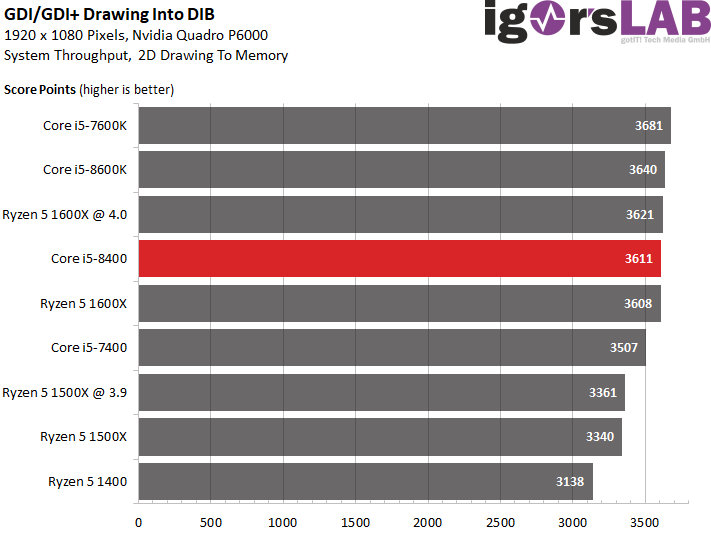
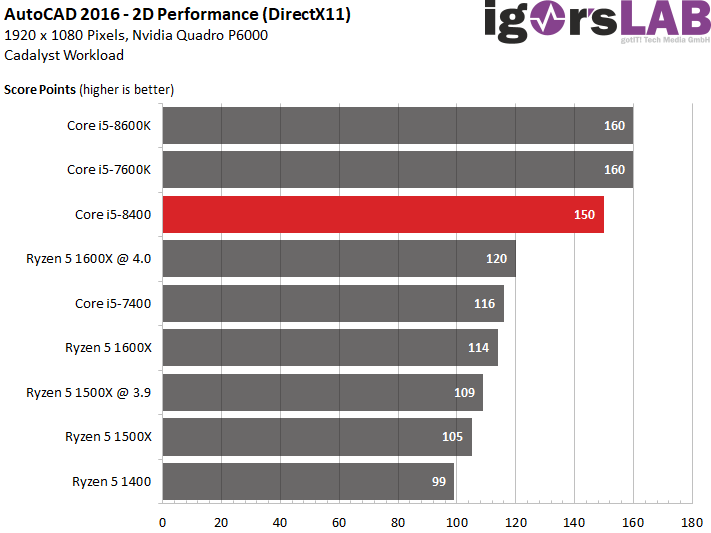
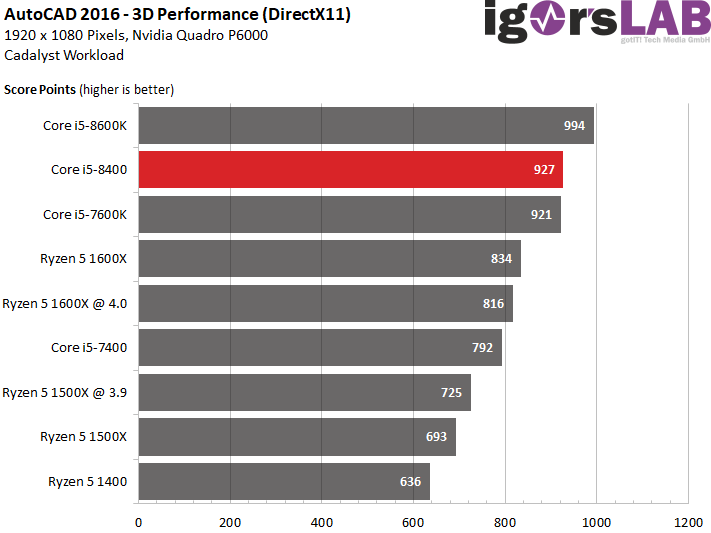
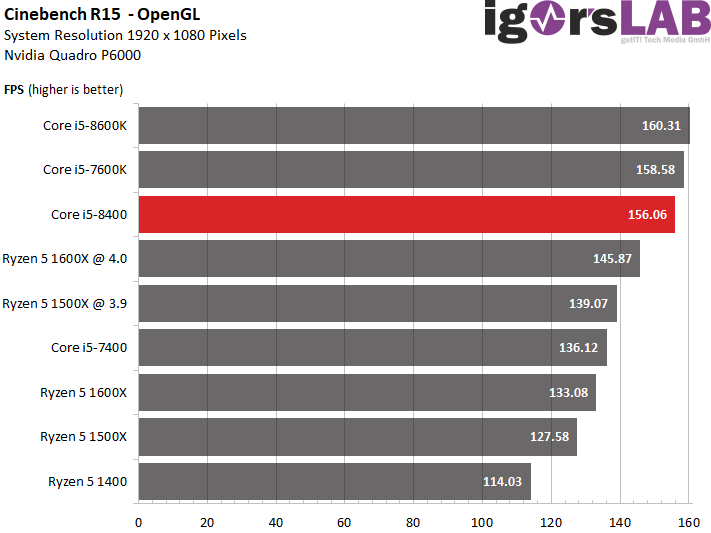
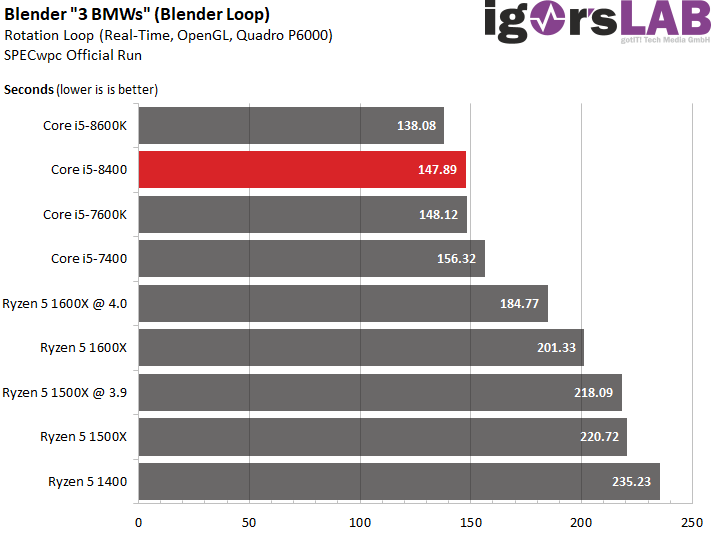
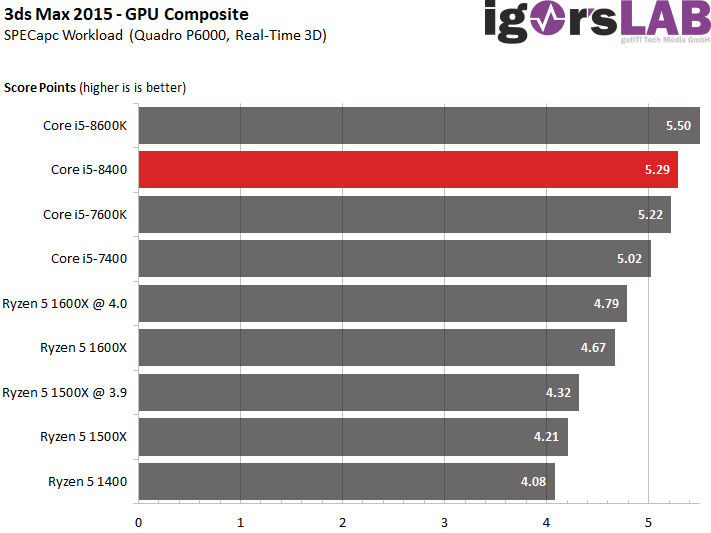
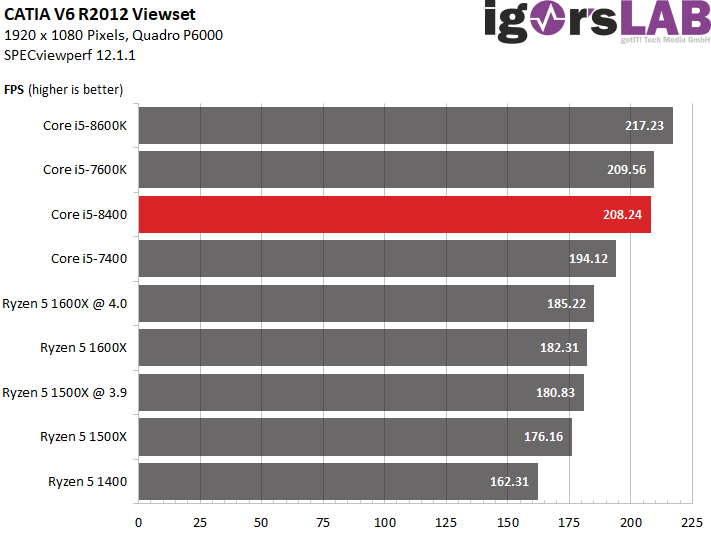
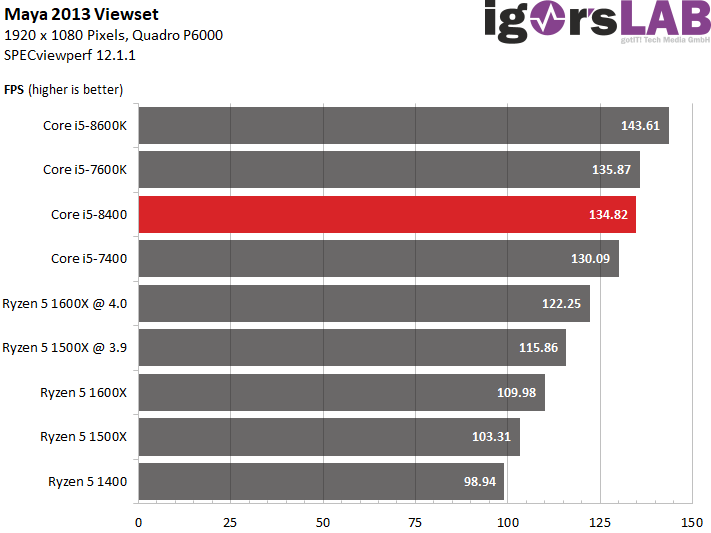

















Kommentieren